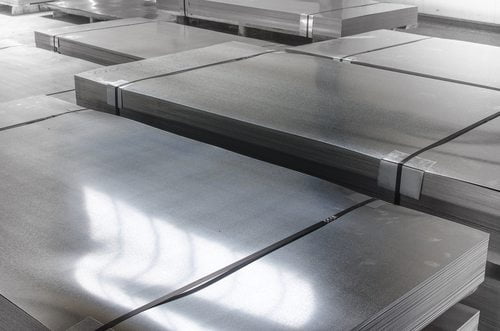Differences Between Hot and Cold Rolled Steel

Common Welding Mistakes to Avoid
June 1, 2017
Different Applications of Expanded Metal
June 15, 2017Within any steel or metal-working project, it’s important to know the different types of material available, and how these different types might offer advantages for your project. One of the first areas here within steel: Whether the material is hot rolled or cold rolled during production.
At Wasatch Steel, we provide both hot rolled and cold rolled steel rounds. What goes into the processing of each type, and what are the benefits of each? Let’s take a look.
Hot Rolled Steel
Hot rolled steel is created at temperatures of over 1,000 degrees Fahrenheit during the rolling process. It will typically take on a blue-gray finish that feels rough to the touch after processing is complete. The steel actually reconfigures itself during the cooling process, which gives the finished product looser tolerances than the original material (or than cold rolled steel products, as well).
This makes hot rolled steel more malleable, which means it can be forced into a wider variety of shapes. This makes it a good choice for manufacturing of structural components, including I-beams or cross-sections like train tracks. It’s also used to create sheet metal, and is preferred for larger materials that need to be molded into more distinct shapes.
Cold Rolled Steel
Cold rolled steel is rolled at near room temperature, which increases the strength of the product through the use of strain hardening by as much as 20 percent. It will have gray finish that feels smooth to the touch. Cold rolled steel creates a finished product that’s more dimensionally precise than hot rolled steel.
This means cold rolled steel is more limited in shape, but it makes it perfect for items like bars, strips, rods and sheets. These smaller products will be much more tolerant than their equivalent versions via hot rolled steel. Cold rolled steel can be found in a few different conditions, including full hard, half hard, quarter hard and skin rolled.
Want to learn more about hard or soft rolled steel, or any of our other steel services? The technicians at Wasatch Steel are standing by to help.



